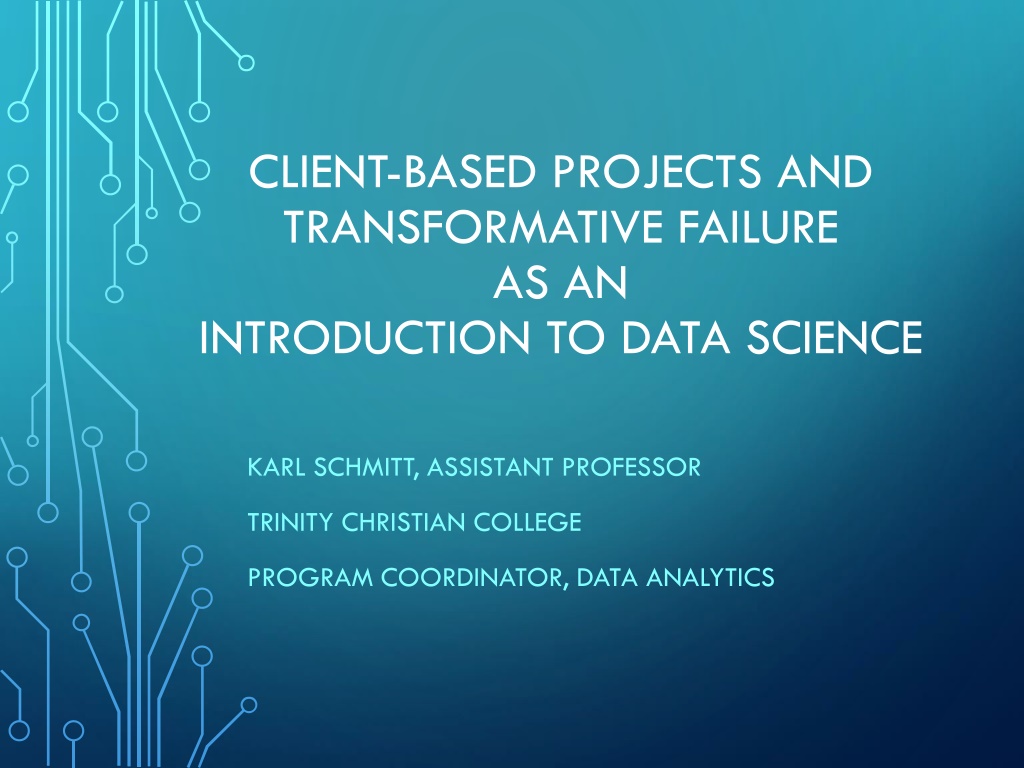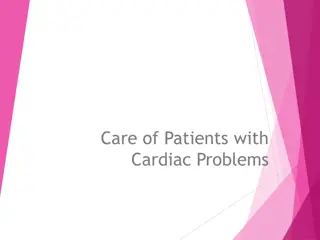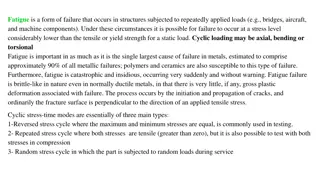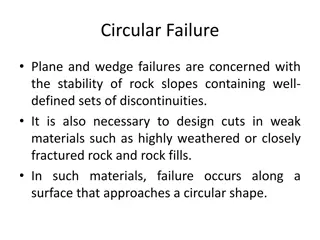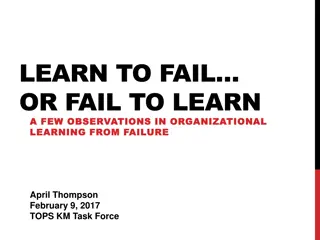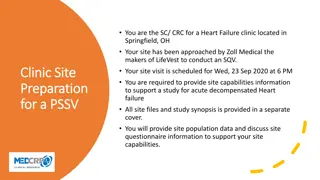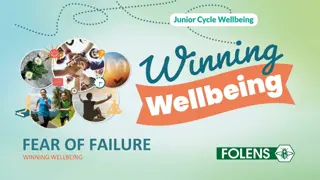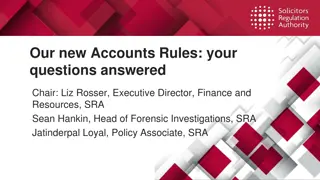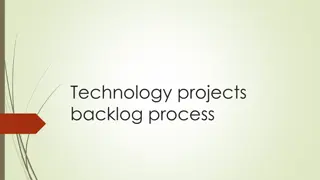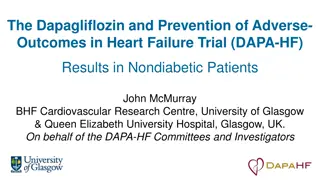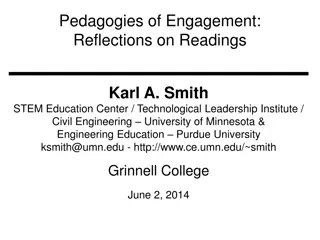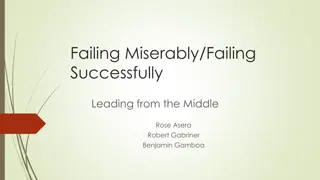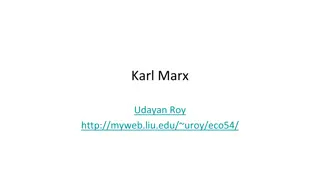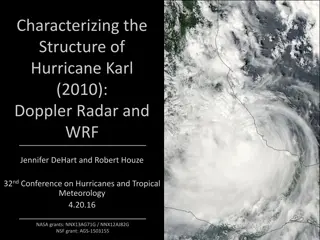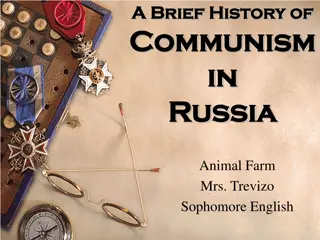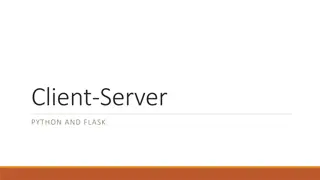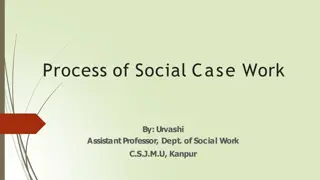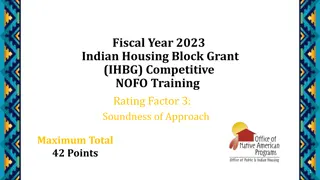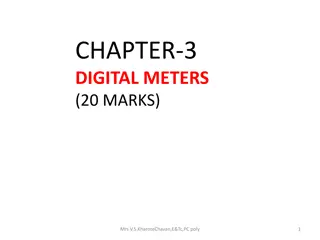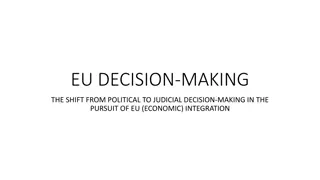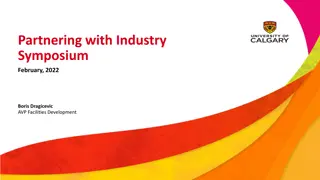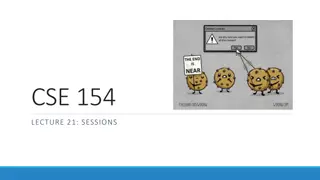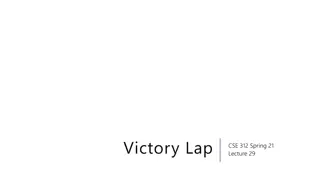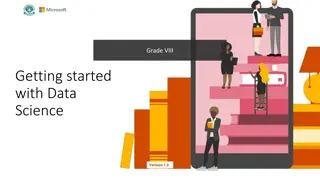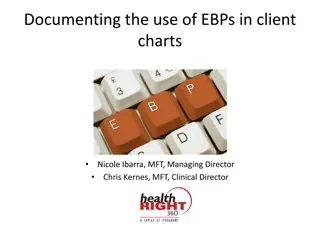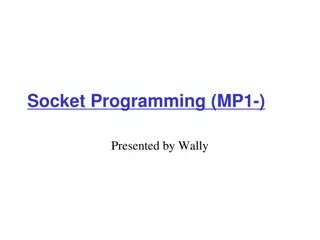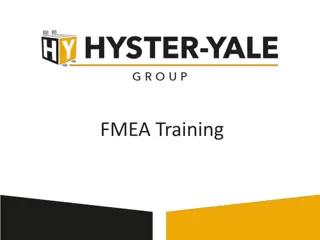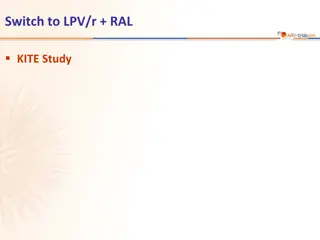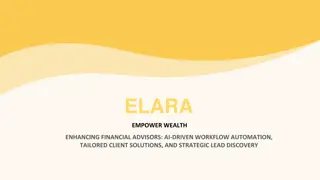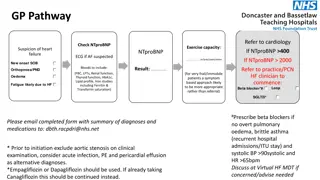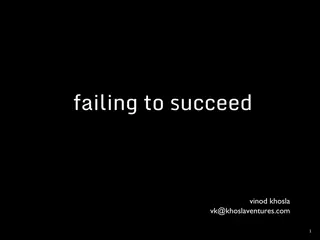Introduction to Data Science: Client-Based Projects and Transformative Failure by Karl Schmitt
This course overview introduces the significance of client-based projects and transformative failure in data science education at Trinity Christian College. The content covers the course context, institutional background at Valparaiso University, course structure, learning goals, and the importance of engaging students through real-world projects. Emphasizing the messy nature of real data, the course aims to develop analytical thinking and prepare students for workforce challenges.
Download Presentation

Please find below an Image/Link to download the presentation.
The content on the website is provided AS IS for your information and personal use only. It may not be sold, licensed, or shared on other websites without obtaining consent from the author. Download presentation by click this link. If you encounter any issues during the download, it is possible that the publisher has removed the file from their server.
E N D
Presentation Transcript
CLIENT-BASED PROJECTS AND TRANSFORMATIVE FAILURE AS AN INTRODUCTION TO DATA SCIENCE KARL SCHMITT, ASSISTANT PROFESSOR TRINITY CHRISTIAN COLLEGE PROGRAM COORDINATOR, DATA ANALYTICS
OUTLINE Course Context & Overview Why projects? Why early? Course Evolution, Reflections, and Impacts Where to find resources Questions 2
INSTITUTIONAL CONTEXT Valparaiso University: About 3500 undergrads About 800 engineering students (28 faculty) Lutheran (faith-based) institution 15 full-time Math/Stat faculty (14 Tenure-Track) 9 full-time CIS faculty (4* Tenure-Track) Data Science Program Housed in Mathematics & Statistics (MST) *Director held affiliate appointment in Computing and Information Sciences (CIS) Started in Fall 2016 Graduate Program in Analytics and Modeling since 2011 3
COURSE OVERVIEW/CONTEXT First* course in Data Science (Major) Minimal prerequisites Offered in SPRING semesters Typically taken by: Freshmen/Sophomores (majors or Stat/Math) Junior/Seniors (CS or Engineers) 15 Weeks, Offered as 2+3: Lecture 2x a week (50 min) Lab/Project Time 2x a week (75 min) All sessions meet in a computer lab 4
COURSE OVERVIEW/CONTEXT: LEARNING GOALS Course Goals: Understand the fundamental concepts of data science and knowledge discovery Apply and perform the basic algorithmic and computational tasks for data science Develop and improve analytical thinking for problem formation and solution validation 5
WHY PROJECTS? Evidenced-based best practice for engaging minorities (and students in general)1 Real data is messy!2 Prepares them for realistic workforce experiences Portfolio/Resume building Why CLIENT Projects? Because real data really is messy!2 Real issues in data are not always easily designable Data-Science for Social Good w/ Institutional Values Increases drive/commitment to develop high-quality results and project Builds Data acumen 6 [1]Corbett, C. and Hill, C. 2015. Solving the equation: the variables for women s success in engineering and computing. DC: AAUW. (2015). [2]Committee on Envisioning the Data Science Discipline: The Undergraduate Perspective et al. 2018. Data Science for Undergraduates: Opportunities and Options. National Academies Press.
WHY EARLY IN THE PROGRAM? Provide context for topics/learning in future classes Builds important communication and self-management skills Evidenced-based best practice for improving retention! (real data) Establishes resume/portfolio for early internship applications Better prepares them for doing undergraduate research (Potentially) provides a unified topic/dataset for many future classes It s fun.. And why they to be Data Scientists! 7
COURSE EVOLUTION: YEAR 2: Heavier front-loading of programming assignments Required use of GitHub/version control Included significant in-class time for working on projects Had clients present the outcomes/use of projects at the end of the semester YEAR 3: Formal Project Managers Upper classmen data science students. Each managed 2 projects, provided updates and specific help. More detailed schedule of work-load expectations and due-dates for students. This included how many hours per week to work on the project, homework, readings, etc. NO website or GitHub required for sharing materials (though encouraged) YEAR 4 & 5: Return of GitHub! Refinement of work-schedule. Full removal of in-class labs , replaced with project time
TRANSFORMATIVE FAILURE What Goes Wrong? What gets learned? Failure in: the data (set) How to deal with missing data, redesign questions, etc. How to clarify questions, answering intention, not question How to balance responsibilities, find each strengths, share How to reassess goals, time- management, good enough Picking feasible targets, interpreting outputs, context Identifying the real questions, needs and goals client communication team dynamics following the project timeline delivering results answering the client question(s) 9
SOME GENERAL REFLECTIONS Teaching the Data Science content is far easier than teaching the project management skills! It is important to have easy-going, but dedicated clients As an instructor, you need to manage the students, project managers AND the clients. The students might not appreciate the pain they go through at the time, but long-term it is incredibly beneficial 10
RESOURCES SIGCSE and SIG-STATED List-Serves Projects: Kaggle.com Challenge.gov Riipen.io and Telanto.com http://www.teachingdatascience.org/ Sort of defunct maybe revived? Peer-Reviewed Article: Schmitt, Karl Robert Bruce, Lissa Yogan, and Adali Johnson. "Transformative Learning in Client Based Research Projects." Journal of Transformative Learning 5.2 (2019). 11
ACKNOWLEDGEMENTS Lissa Yogan, Valparaiso University Adi Johnson*, Valparaiso University Project Clients & Data 151 students 12
